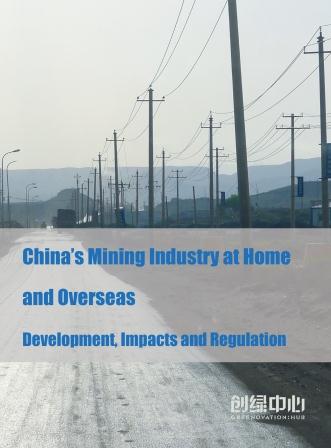Read and download PDF version:
China Mining at Home and Overseas_Main report_EN
China Mining at Home and Overseas_Case study_EN
Between June 2012 and December 2013, Greenovation Hub conducted an in-depth study of China’s mining industry. Backed by case studies from China, Peru, Laos and Cambodia. The report examines the development of China’s domestic and international mining industries, the impacts of this development and its environmental regulation.
China’s Mining Companies Go Global
China’s mineral resources are extensive and diverse, and the country is now the world’s top producer of a number of important metals and minerals. Chinese mining companies are also pursuing overseas projects with support from China’s “going out” strategy, through which the Chinese government encourages companies to expand their operations overseas. Overseas investment in all sectors has risen rapidly since 2004. According to China’s Ministry of Commerce (MOFCOM), outbound direct investment (ODI) in 2013 exceeded US$107 billion. Mining is one of the most important sectors for Chinese outbound investment, ranking in the top four overseas industries since 2004.
The Impacts of Chinese Global Investment in Mining
The mining industry has helped to facilitate the unprecedented development China has experienced over the past few decades. There are also numerous potentially positive outcomes of China’s overseas mining investments. The large injections of capital associated with mining can stimulate industry and contribute to the development of much needed infrastructure in developing countries. Mining can create local employment and increase incomes around mine areas and contribute to the development of downstream industries. At the national level mining can contribute to growth in GDP and increase exports. However, Chinese companies have come under criticism in a number of cases for poor standards and practices, and the industry is often connected to serious pollution.
It is important to remember that just as with any other country, Chinese companies come from varied backgrounds. The local context in the countries hosting investment also differs greatly from place to place. It is therefore not possible to say that there is a single model for Chinese overseas mining investments. There are a broad range of companies active overseas, with varying standards and very different records and reputations. To explore this further, Greenovation Hub looked in detail at three different mining companies with investments in China and around the world, each of which illustrate very different approaches and outcomes. These companies include Zijin Mining (China and Peru), MMG Limited (Laos), and China Railway Group (Cambodia). The case studies can be downloaded at the link below.
China Mining at Home and Overseas_Case study_EN
China Mining at Home and Overseas_Main report_EN
Progress Can and Must be Made in Raising Standards in Overseas Investment
It is crucial that Chinese mining companies active overseas not only invest capital, but also support mutually beneficial development, contribute to local economies, and avoid bringing in poor practices. One way that this can be realized is through the development of strong and binding regulations for overseas investment, and adoption of best practice by Chinese enterprises. Progress has been made in recent years in adopting environmental policies for overseas projects. Including guidelines issued by the Ministry of Commerce and Ministry of Environmental Protection, and the China Banking Regulatory Commission’s. Now is the time to build on and ensure implementation of these guidelines.
China has become a global actor with an increasingly important role to play in global governance. In the coming years, this role is likely to continue to grow. As a major player in international investment, finance and trade, China is in a unique position to provide a model for other emerging economies seeking to develop overseas investment opportunities. If this potential is to become a reality, as China enters a new stage in its development and environmental awareness increases, it is important that difficult issues such as those raised here are confronted and addressed.
As a Chinese NGO dedicated to environmental protection, Greenovation Hub (G:HUB) has conducted this research in order to contribute to the on-going discussions regarding China’s progress in developing environmental and social standards for investment and finance. In particular, we hope that by promoting encompassing and open discussions on China’s overseas investment and its footprint, all parties can draw on the best domestic and foreign experiences and lessons, and in the process implementation can be improved and more responsible practices developed. G:HUB seeks to encourage positive change in policy making and implementation regarding overseas investment, finance and trade, and in the process it is hoped that this will support the development of China’s positive role in global environmental governance. G:HUB aims to continue to create space and promote multi-stakeholder dialogue based on similar research and case study analysis in the coming years.




